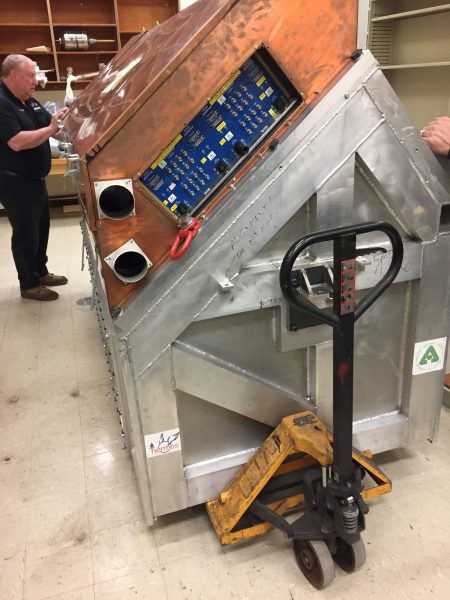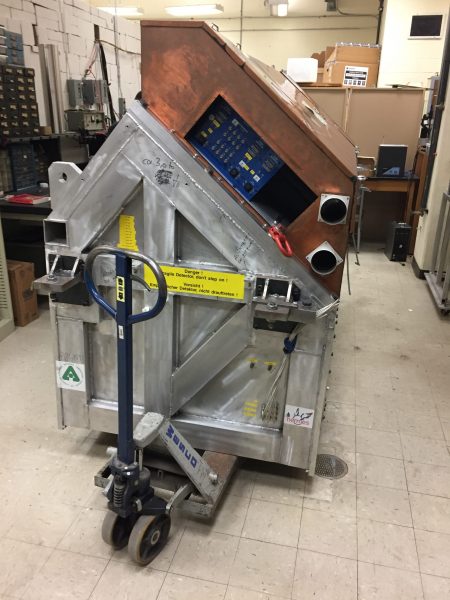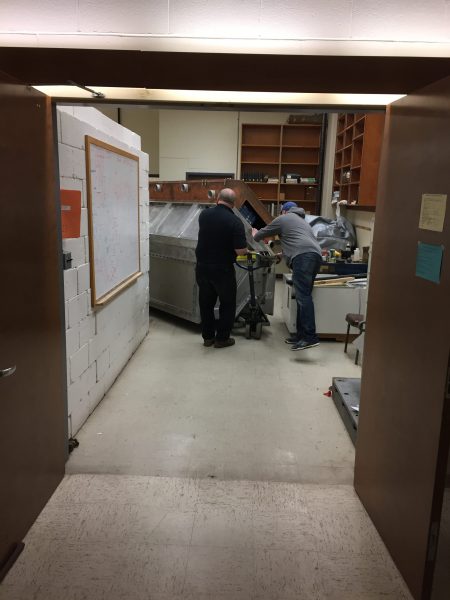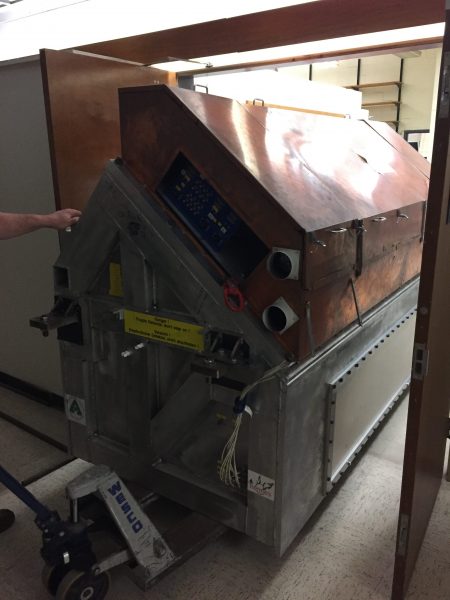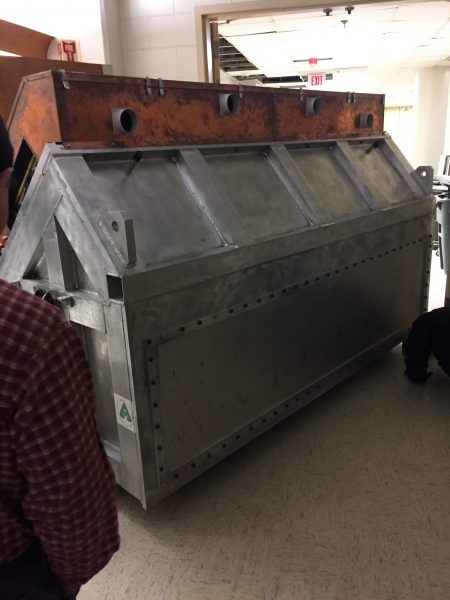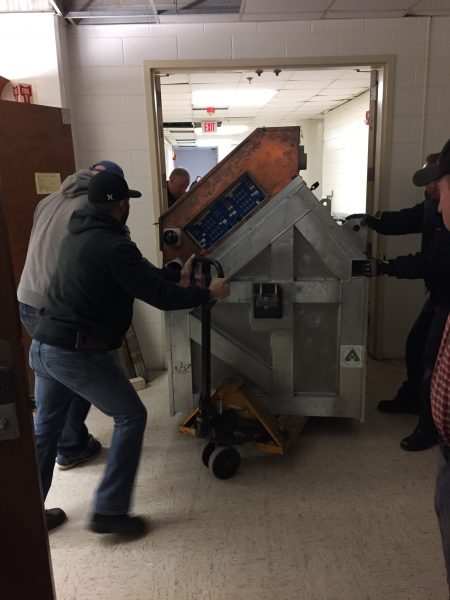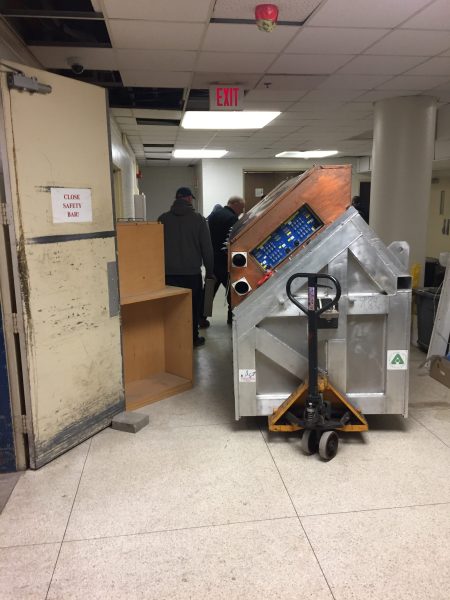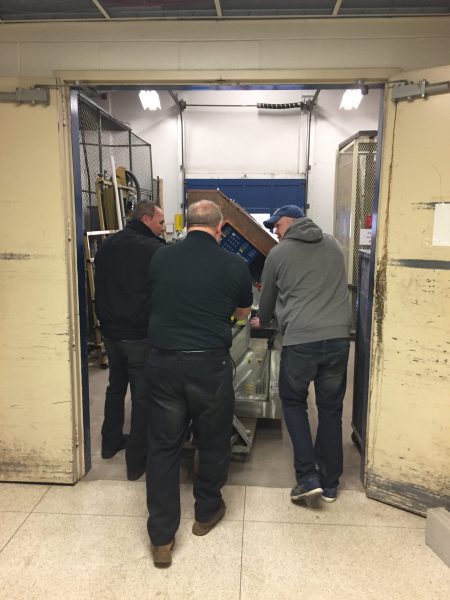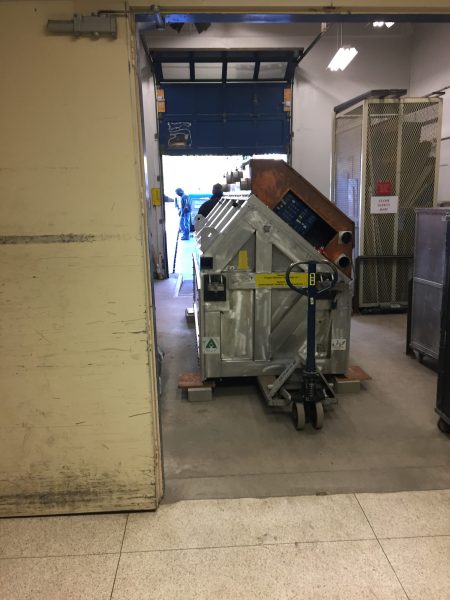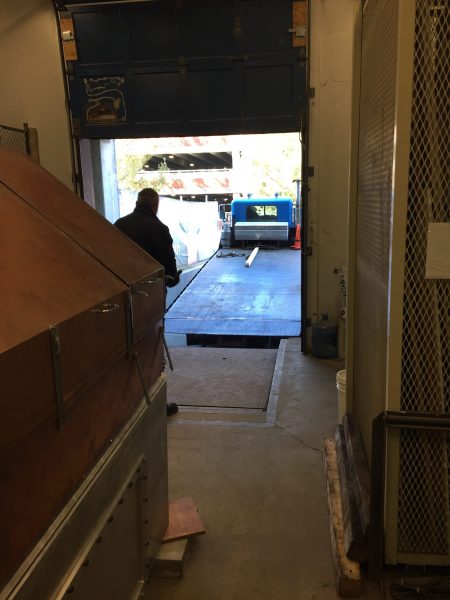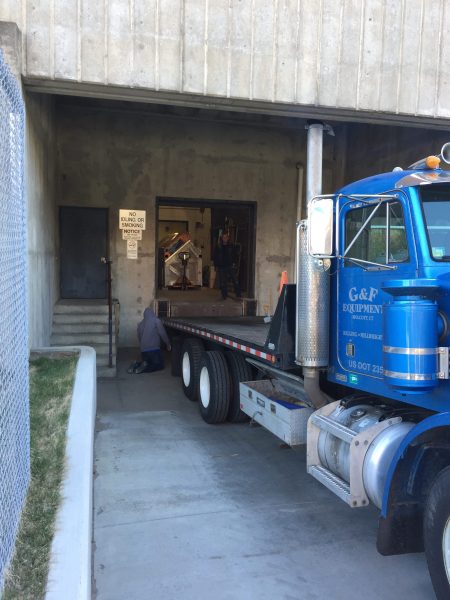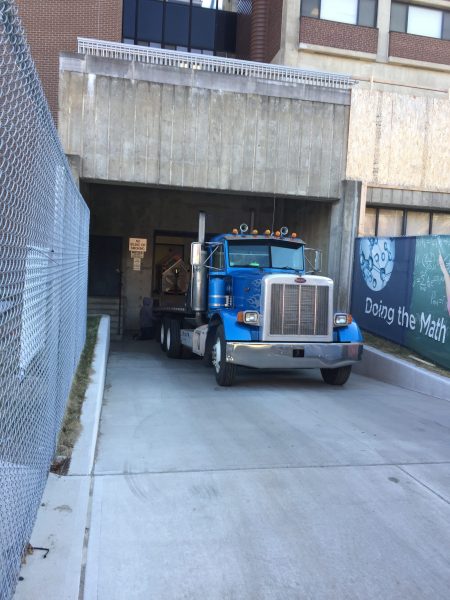Postdoctoral research associate Eric Fuchey is attending SPIN 2018, the 23rd International Spin Symposium, to be held Sept. 10-14, 2018 in Ferrara, Italy. Dr. Fuchey will present the proposal he is developing to study the DVCS process on the neutron using the low-energy “spectator proton tagging” technique in Hall A using the same beam time as the conditionally approved, “Tagged DIS” experiment. The abstract of the talk can be found here.
Author: Andrew Puckett
NAS releases Assessment of US-based Electron-Ion-Collider Science
The National Academies of Science, Engineering, and Medicine have released their assessment of the science of the proposed future US-based polarized Electron-Ion-Collider. The report can be found here.
A joint statement from Jefferson Lab, Brookhaven National Lab, and the EIC Users’ Group can be found here.
The National Academies’ News Release can be found here.
From the press release:
“The National Academies were asked by the U.S. Department of Energy (DOE) to examine the scientific importance of an EIC, as well as the international implications of building domestic EIC facility. The committee that conducted the study and wrote the report concluded that the science that could be addressed by an EIC is compelling and would provide long-elusive answers on the nature of matter. An EIC would allow scientists to investigate where quarks and gluons, the tiny particles that make up neutrons and protons, are located inside protons and neutrons, how they move, and how they interact together. While the famous Higgs mechanism explains the masses of the quarks, the most significant portion of the mass of a proton or neutron comes from its gluons and their interactions. Crucial questions that an EIC would answer include the origin of the mass of atomic nuclei, the origin of spin of neutrons and protons – a fundamental property that makes magnetic resonance imaging (MRI) possible, how gluons hold nuclei together, and whether emergent forms of matter made of dense gluons exist.”
Professor Puckett presents JLab Form Factor Program at CIPANP 2018
Professor Puckett gave an invited talk on the High-Q2 form factor program at Jefferson Lab at the Thirteenth Conference on the Intersections of Particle and Nuclear Physics (CIPANP 2018) in Palm Springs, CA.
SBS RICH Detector Begins Journey from UConn to Jefferson Lab!
On April 5, 2018, the HERMES/SBS Ring-Imaging CHerenkov (RICH) detector began it’s journey from UConn, where it has resided for the last three years, to Jefferson Lab in Newport News, VA, where it will undergo additional testing and preparation before being used for charged particle identification in two approved experiments in JLab’s Hall A. It took two pallet jacks and five workers to move the detector out of the space it was occupying in the UConn physics building and onto a flatbed truck via the physics loading dock. After a short trip to the G&F equipment warehouse in Waterbury, CT, the detector will be placed on a custom-built skid and loaded onto an enclosed freight truck for the nearly 500-mile journey to Jefferson Lab.
Unfortunately, my phone battery died before the detector was loaded onto the truck, so I was unable to photograph the operation of three workers pushing the weight of a light pickup truck up the incline of the loading dock! (The truck had a winch available in the event that the workers could not push the detector up the ramp…)
Professor Puckett to give invited talk at DIS 2018 in Kobe, Japan
Professor Puckett will present an invited talk titled “The Future DIS program in Jefferson Lab’s Halls A and C” at the upcoming 26th International Workshop on Deep Inelastic Scattering and Related Subjects, to be held in Kobe, Japan. More details about the conference can be found here.
Ph.D. Student Freddy Obrecht to present at April APS meeting
Current group member and Ph.D. thesis student Richard F. “Freddy” Obrecht will present the preliminary results of his dissertation research at the upcoming 2018 April Meeting of the American Physical Society in Columbus, Ohio. The abstract for the talk can be viewed here.
Professor Puckett named co-spokesperson of experiment E12-07-109
Professor Puckett has officially joined experiment E12-07-109 in Jefferson Lab’s Hall A as a co-spokesperson. The experiment will measure the proton’s electromagnetic form factor ratio μp GEp/GMp using the polarization transfer method up to a momentum transfer Q2 = 12 (GeV/c)2. Professor Puckett was invited to become a spokesperson as a result of his expertise in the polarization transfer method and his previous and intended contributions to the successful completion of the experiment.

The figure compares the expected precision of the data from E12-07-109 (blue filled squares) to existing data and various theoretical predictions.
Professor Puckett gives seminar at Jefferson Lab
Professor Puckett gave an invited seminar on January 26, 2018 at Jefferson Lab, on the recent Phys. Rev. C archival publication of the GEp-III and GEp-2γ experiments.
The slides from the seminar are archived here.
New publication in Physical Review C
Professor Puckett was the lead author on the recent full-length publication titled “Polarization Transfer Observables in Elastic Electron-Proton Scattering at Q2 = 2.5, 5.2, 6.8, and 8.5 GeV2“, published as Physical Review C, 96, 055203 (2017). This was a combined archival publication for two high-profile experiments that ran in Jefferson Lab’s Hall C, commonly known as GEp-III and GEp-2γ.
